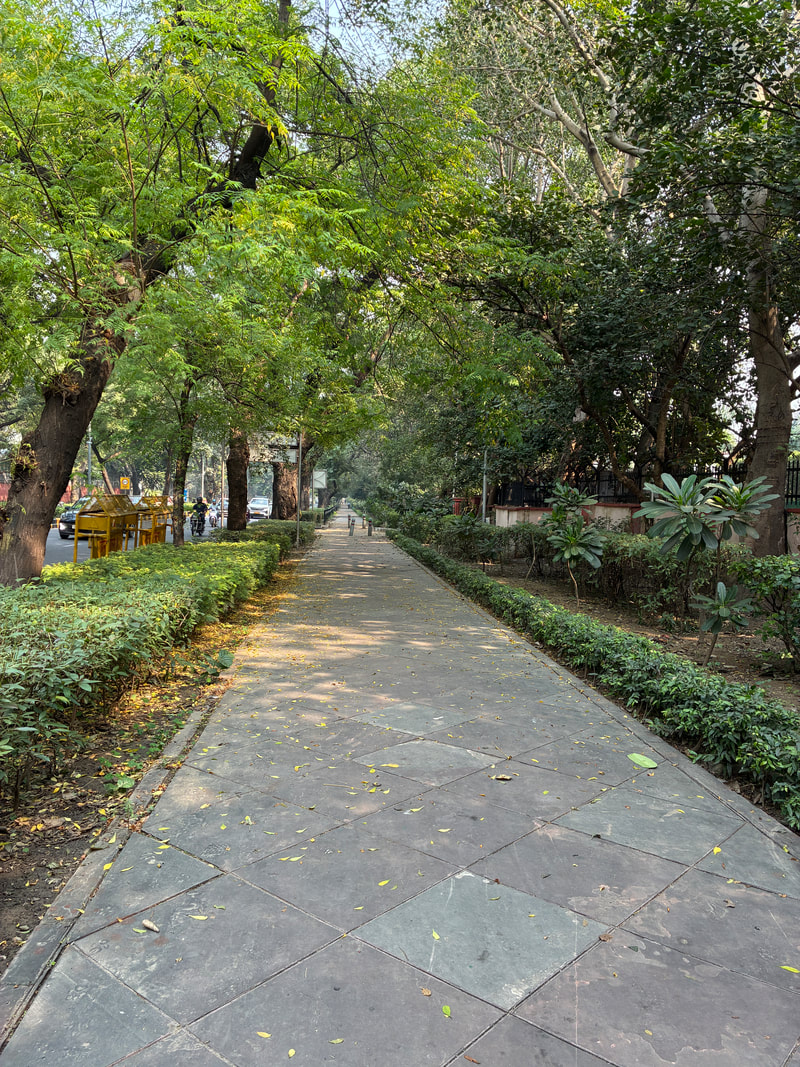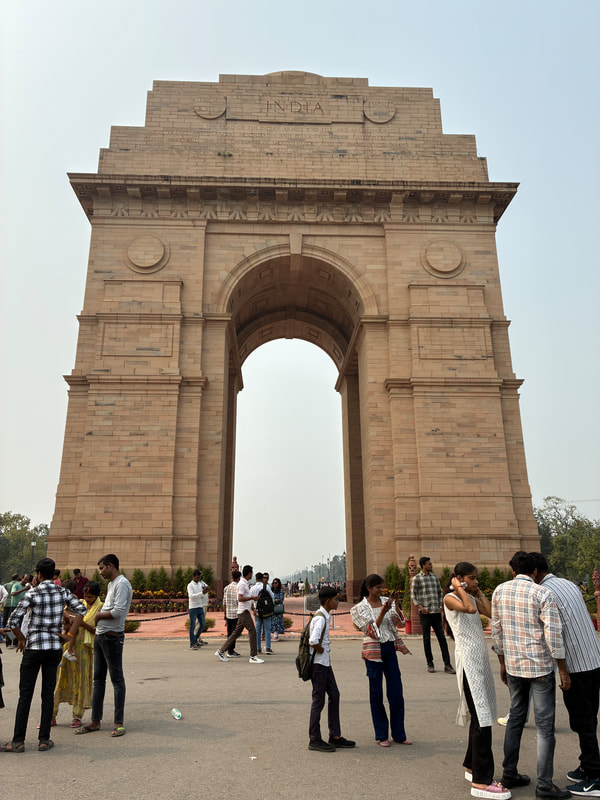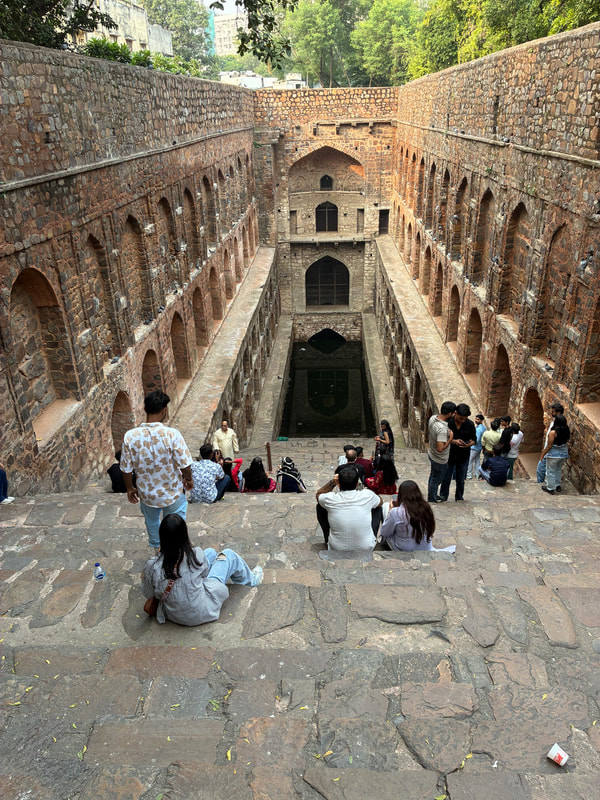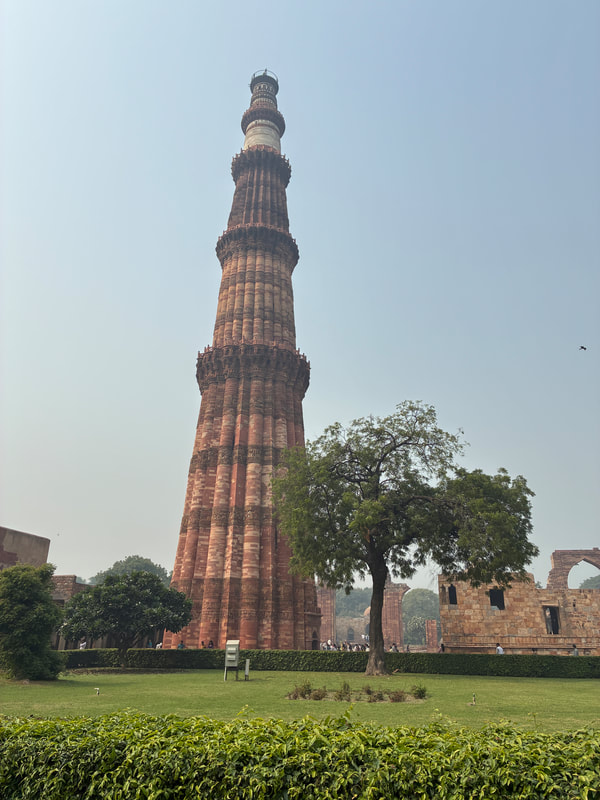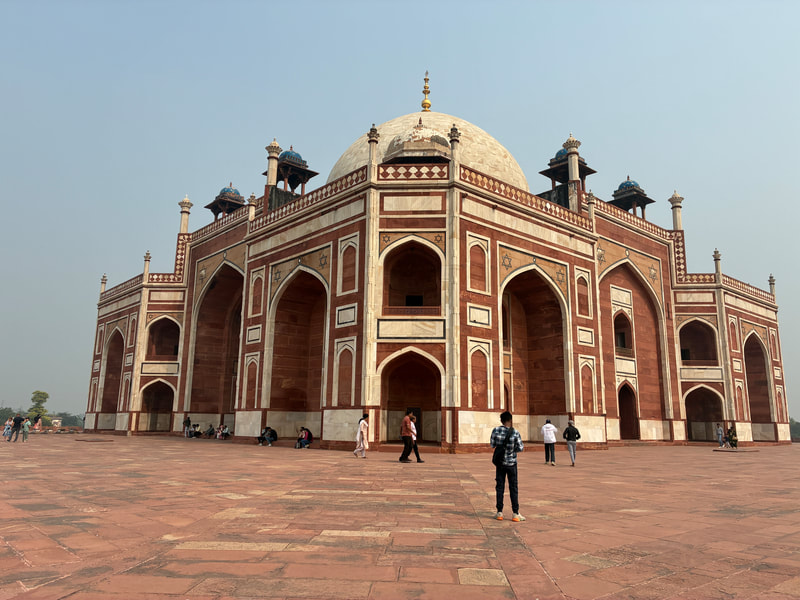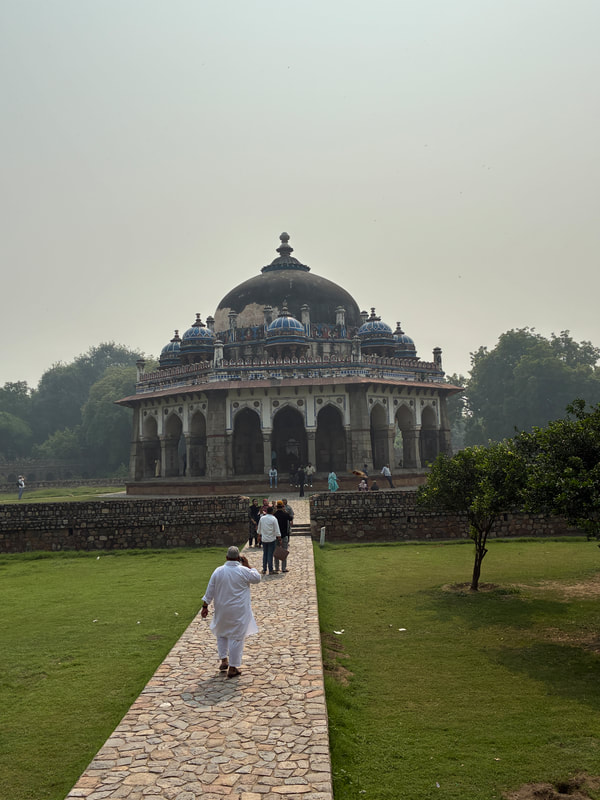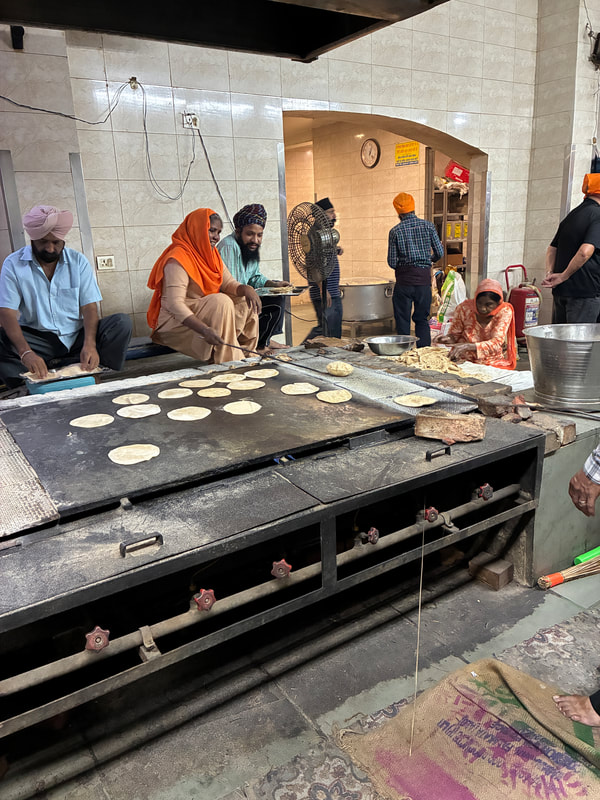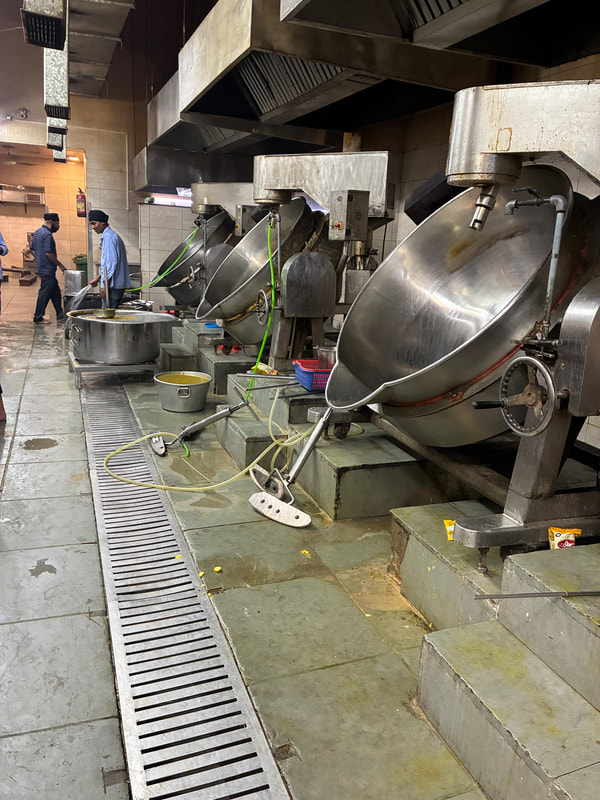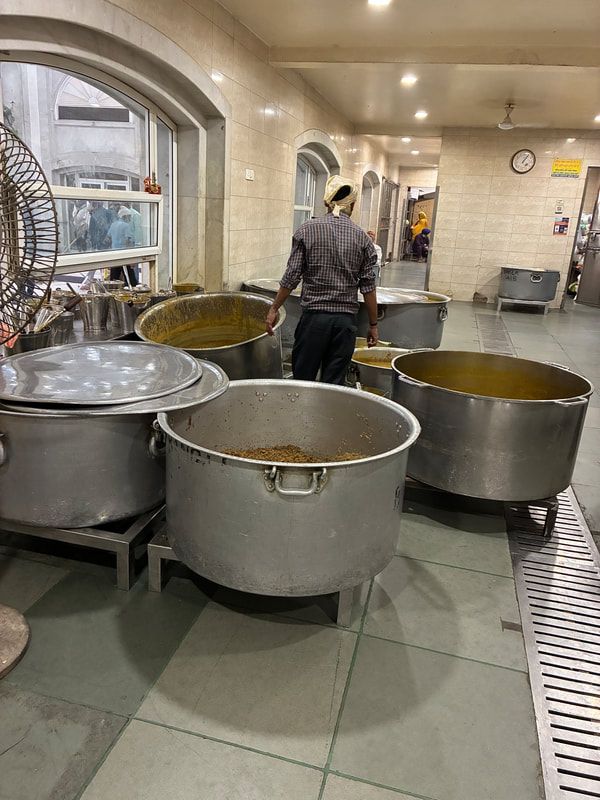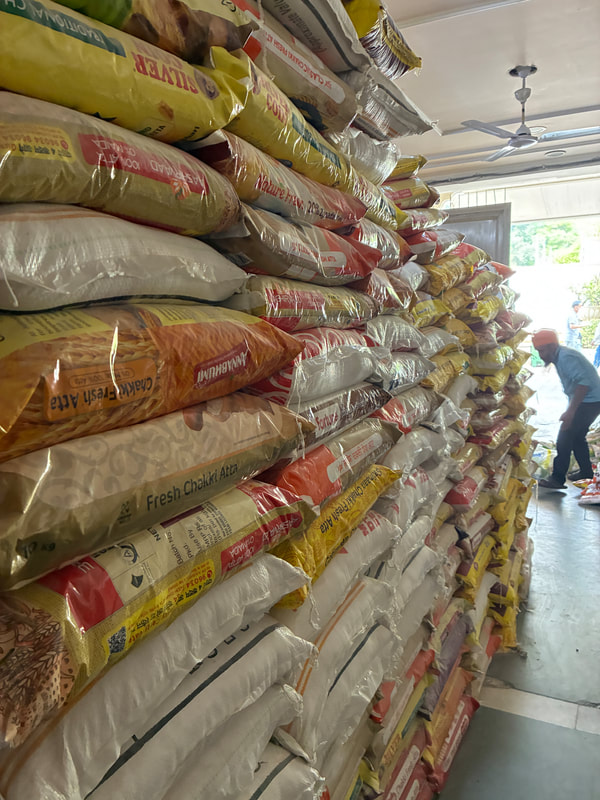|
Das erste, was mir in Delhi aufgefallen ist sind die grossen Alleen mit wunderschönen Bäumen und angenehmen Trottoirs. Wir waren dann auch in einem der schönsten Hotels, in denen ich je war (ich habe noch zwei Gutscheine einlösen können, die mir zum Abschied von meiner Arbeit geschenkt worden waren). Am ersten Tag haben wir das India Gate (eine Art Arc de Triomphe in Erinnerung an die indischen Soldaten, die im ersten Weltkrieg gefallen sind) und den dazugehörigen Park zu Fuss erkundet. Danach waren wir mit einer Autoriksha unterwegs: Wir haben das alte und neue Parlament, den President‘s Palace und das alte Wasserreservoir mit Treppe "Agrasen Ki Baoli" gesehen. Anschliessend waren wir im National Museum, in dem alte Kunst ausgestellt ist. Am zweiten Tag waren wir mit einem Guide unterwegs und haben weitere grosse Monumente besucht: das Qutub Minar (ein 73 m hoher Turm aus dem 12. Jahrhundert, der den Sieg der Muslime über die Hindus feiert), das Humayun Grab (1565 gebaut, eine der ersten Mughal-Architekturen), einen Sikh Tempel (hier werden jeden Tag ca. 35'000 Essen kostenlos herausgegeben) und wir waren ein wenig in der Altstadt spazieren. Schliesslich waren wir am letzten Tag in der National Gallery of Modern Art, wo Bilder und Skulpturen ab dem 19. Jahrhundert ausgestellt sind und die Entwicklung der Kunst in Indien bis in die heutige Zeit aufgezeigt wird. India Gate, Agrasen's Stepwell, Qutub Minar The first thing I noticed in Delhi were the wide avenues lined with beautiful trees and pleasant pavements. We also stayed in one of the most beautiful hotels I have ever been to (I was able to redeem two vouchers that I had been given as a farewell gift when I left my job). On the first day, we explored India Gate (a kind of Arc de Triomphe in memory of the Indian soldiers who fell in the First World War) and the adjoining park on foot. Afterwards, we took an auto rickshaw and saw the old and new parliament buildings, the President's Palace and the old water stepwell, ‘Agrasen Ki Baoli’. Afterwards, we went to the National Museum, where ancient art is exhibited. On the second day, we took a tour with a guide and visited other major monuments: the Qutub Minar (a 73-metre-high tower from the 12th century celebrating the victory of the Muslims over the Hindus), Humayun's Tomb (built in 1565, one of the first examples of Mughal architecture), a Sikh temple (where around 35,000 meals are served free of charge every day) and we took a short walk through the old town. Finally, on the last day, we visited the National Gallery of Modern Art, where paintings and sculptures from the 19th century onwards are exhibited, illustrating the development of art in India up to the present day. Humayun's Tomb and (right) the Sikh temple (Gurdwara Bangla Sahib) La première chose qui m'a frappé à Delhi sont les grandes avenues bordées de magnifiques arbres et dotées de trottoirs agréables. Nous avons également séjourné dans l'un des plus beaux hôtels où j'ai jamais été (j'ai pu utiliser deux bons qui m'avaient été offerts lorsque j'ai quitté mon travail). Le premier jour, nous avons exploré à pied l'India Gate (une sorte d'Arc de Triomphe à la mémoire des soldats indiens tombés pendant la Première Guerre mondiale) et le parc qui l'entoure. Ensuite, nous avons pris un autorickshaw : nous avons vu l'ancien et le nouveau parlement, le palais présidentiel et l'ancien réservoir d'eau avec son escalier « Agrasen Ki Baoli ». Nous avons ensuite visité le Musée national, où sont exposées des œuvres d'art anciennes. Le deuxième jour, nous avons pris un guide et avons visité d'autres grands monuments : le Qutub Minar (une tour de 73 m de haut datant du XIIe siècle, qui célèbre la victoire des musulmans sur les hindous), le tombeau de Humayun (construit en 1565, l'un des premiers édifices de style moghol), un temple sikh (où environ 35 000 repas sont distribués gratuitement chaque jour) et nous nous sommes promenés un peu dans la vieille ville. Enfin, le dernier jour, nous avons visité la National Gallery of Modern Art, où sont exposés des tableaux et des sculptures d'à partir du XIXe siècle et qui retracent l'évolution de l'art en Inde jusqu'à nos jours. Die Küche im Sikh Tempel: alle arbeiten freiwillig und jede Person, egal welcher Herkunft oder Religion, darf hier essen. Das ganze ist sehr gut organisiert und es werden jeweils so viele Leute reingelassen, wie Platz haben. Ich nehme an, dass die Wartezeiten eher lang sind.
The kitchen in the Sikh temple: everyone works voluntarily and anyone, regardless of their origin or religion, is allowed to eat here. The whole thing is very well organised and groups of as many people as there is room for are allowed in. I assume that the waiting times are rather long. La cuisine du temple sikh : tout le monde travaille bénévolement et chaque personne, quelle que soit son origine ou sa religion, peut venir manger ici. Tout est très bien organisé et les personnes sont admises par groupe qui ont de la place; les uns après les autres. Je suppose que les temps d'attente sont plutôt longs.
0 Comments
Leave a Reply. |
About usWe are a couple in the mid-fifties and are going to live for two years in Hyderabad, India. Time in Hyderabad
Archives
October 2025
Categories |
